
DOCUMENTARIES
CHINESE BUBBLE (2011)
Different points of view on the real estate boom in China. A struggling taxi driver cannot afford any of the empty apartments that he photographs while roaming Beijing. A construction worker is fully aware that his toil represents the hopeless existence of a worker who is building skyscrapers while he is not making enough to eat. Meanwhile a developer of the same skyscrapers basks in the limelight of a revered tycoon. A good insight into China’s real estate market, the main source of wealth there in the early 2000s, and the fact that this wealth does not trickle down too much to those who work in the industry.
MILLION DOLLAR SHACK (2015)
A homemade documentary made by a family in the Northern California Bay Area who found themselves priced out of the neighborhood they grew up in. The Silicon Valley boom created there the most expensive housing market in the U.S. A series of personal stories illustrate the plight of regular California families who have no chance to compete against Chinese investors, tech executives, and landlords who raise rents 300% in one year. This is a megacity area that has also created mega-commuters. For example, we learn the story of Maryann Creasy Rieger who was forced to commute some 180 miles a day between her home in Fairfield and her job at Yahoo on the Peninsula when CEO Marissa Mayer put an end to telecommuting. A reportage from the trenches of a real estate war between cash-rich investors and young families.
GLOBAL CITIES: SHORT HISTORY (2016)
Brookings Book Club event where internationally renowned global urbanist Greg Clark discussed his book Global Cities: A Short History with Financial Times columnist Edward Luce. Because it is a Brookings Institute public interview about a book, it has a more scientific and intellectual approach to the subject than typical documentaries on commercial TV. It provides a good overview of what makes a city a global hub, what is their future, and which cities are falling out or rising to global prominence. An interesting discussion follows on cities’ sustainability in terms of strategy and factors of vulnerability due to coastal locations. The discussion lasts only an hour; then they just left the camera running so you can skip the second part of the video.
GLOBAL CITIES: THE RISE OF URBAN NETWORKS (2017)
While large cities have existed since the Sumerian times, the speed and scale of urban transformations in the last few decades are both enormous and alarming. Over one million people are added to the global urban population every week. The documentary explores the changes in the new urban landscape with good footage, but the voice-over commentary is a bit mind-numbing as if written by a robot rather than a human. It states a lot of facts without any analysis, all of it delivered in techno-speak, so viewers should beware.
MEGACITIES: NEW YORK (2015)
A National Geographic documentary on the NY transportation system.
WORLD’S LARGEST UNDERGROUND CITY: CHICAGO (2016)
An episode of National Geographic in the Mega Engineering series, the documentary explores the creation of underground cities as a solution for cities that have no space to expand on the surface. Cities featured include Moscow, where many underground malls and subway networks are already in existence, Amsterdam, which is planning to dig extensively under its canals, and Chicago, which is planning an ambitious project of a second city to be built many floors underground.
MEGACITIES: MEXICO CITY (2017)
Mexico City has learned from the devastating earthquake of 1985, when a large part of the city was destroyed and thousands of people died. The metropolitan area of 21 million inhabitants now has an early warning system and metro rails that are designed to float above the shaking ground. The city’s earthquake protection can serve as a model for other megacities in similar danger zones.
WATERFRONT CITIES OF THE WORLD: TOKYO (2017)
Shows life in contemporary Tokyo, a city that urbanized away from western culture. This has many modern-day repercussions, while overcrowding, lack of land, and industrial development bring new problems that have to be resolved daily. It’s an agglomeration of 35 million people living in close proximity in a maze of smaller neighborhoods and connected by a vast subway network. Tokyo inhabitants come up with ingenious ways to cope with lack of space (hotel cubicles to sleep, one-seat restaurant rows, tiny alley bars) and efficiency designs to maximize city space like subterranean bike and car parking machines.
MEGACITIES: LONDON (2017)
National Geographic documentary on London’s mega-traffic in the air that is managed as an amazing 3D puzzle by air traffic controllers who have only seconds to avert collisions. London’s traffic flow on the roads is managed by monitoring via countless cameras, thousands of sensors and prediction systems, and congestion zoning—a sophisticated system that literally keeps the city going.
GHOST CITY: INSIDE THE CHINESE HOUSING BUBBLE (2016)
A homemade reportage told by two expats (English and American) who live in the Shenzhen area and who are exploring how the “Great Chinese Housing Bubble” looks on the ground. A good, ear-to-the-ground report about real estate corruption and daily life in modern Chinese society.
“THE DAILY CONVERSATION” DOCUMENTARIES
Featured at a YouTube mini-channel called “The Daily Conversation,” these “mini-documentaries” present the world’s megacities and major construction projects, providing some information of each city’s problems and its solutions. A great resource for anyone interested in megacities and mega-engineering projects.
CHINA’S FUTURE MEGAPROJECTS (2016)
An overview of China’s most ambitious project of creating a super-city of “Jing Jin Ji” in the tri-province region around Beijing. This requires new airports, diverting large amounts of river water supply, and adding high-speed rail lines—all of which is already well underway. Another building megaproject is an undersea tunnel in Dalian, which is not only one of the longest tunnels but also a daring route through a high-earthquake zone. Other big constructions include wind farms and nuclear plants that China needs just to keep its lights on, and megabridges from Hong Kong and Shenzhen to the mainland.
THE WORLD’S FUTURE MEGAPROJECTS (2017)
A documentary on eight major megaprojects such as Turkey’s building boom in Istanbul, Nigeria’s development of the city of Lagos, and construction of a super stadium in Atlanta, Georgia. Other megaprojects featured here include a project to probe an exoplanet, a mission to send astronauts to Mars, India’s modernization of roads, and China’s One Belt One Road initiative. All these ambitious projects to secure future advantages involve huge present-day expenditures of money, resources, and societal displacement.
NEW YORK: AMERICA’S MEGACITY (2017)
A concise history of New York’s development from a small settlement into a financial, social, and power center of the U.S. A list of current challenges: an out-of-date subway system, the exorbitant cost of housing, and the threat of rising sea levels.
MEGACITIES: SAO PAULO (2018)
A megalopolis of 20 million people who suffer from a lack of fresh water in a country where 20% of the world’s sweet water is concentrated. A lesson in 21st century city growth: megacities need to develop better sustainability to avoid crises of basic needs of clean water or air.
THE WORLD’S FASTEST GROWING MEGACITY: DHAKA (2017)
A mini-portrait of the world’s most densely populated city of Dhaka in Bangladesh, where overpopulation, lack of clean water, and threats of flooding are just some of the city’s problems. Governmental inefficiency and attacks by radical Islamic groups also threaten daily life in the region.
TOKYO: EARTH’S MODEL MEGACITY (2018)
In preparation for the 2020 Summer Olympics, a portrait of Tokyo—the most successful and also the most populous megacity in the history of the world (39 million residents in the metropolitan area). It is also the safest big city on the planet and has a two trillion dollar GDP. Tokyo’s changes to its energy management and some road upgrade programs are presented as well.
CAIRO: MEGACITY OF THE MIDDLE EAST (2017)
The largest city of the desert region, Cairo experienced a heyday as a center of spice trade in the Middle Ages, followed by a period of decline until the 1930s, and urban sprawl since the 1950s. Contemporary Cairo suffers from overpopulation that is not alleviated by suburbs that stand empty due to lack of jobs and transportation. There is a project to build a second capital (by a Chinese company), but it may not solve all of the region’s problems.
HOW TO PROTECT FAST-GROWING CITIES FROM FAILING (2014)
Robert Muggah, a security expert who studies megacities, talks about violence that is concentrated in some cities of Africa, Latin America, and Asia, while other continents and northern countries are experiencing unprecedented peace and prosperity. An extraordinary demographic reversal in history took place: In the 1800s, one person in thirty lived in a city; now it is one person in two. Cities that urbanize too fast are the ones where violence is the most intense. Karachi is given as an example—in 1947 it was a city of 500,000 people; it is now a megacity of 21 million and also one of the most violent cities in the world. The question is how to make the megacities that are more fragile more successful in combating gangs, poverty, and inequality.
HOW MEGACITIES ARE CHANGING THE MAP OF THE WORLD (2016)
Global strategist Parag Khanna proposes that as our expanding cities grow ever more connected through transportation, energy, and communications networks, we evolve from geography to what he calls “connectography.” The world will change from being divided according to politics and geographical barriers into a world connected through a network of functions. Cities already collaborate on sustainable urbanization, even if their governments are not doing it successfully. Increased connectivity brings bigger stability and holds a promise of reducing violence, pollution, and social inequalities.
FEATURE FILMS and TV SHOWS
BLADE RUNNER (1982)
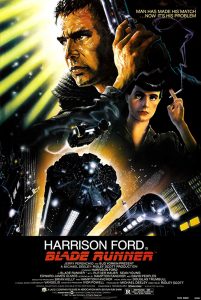
Granddaddy of all visions of the future, the original Ridley Scott’s classic about artificial intelligence running amok in the year 2019 has come to pass in many aspects. Harrison Ford stars as a policeman, a hunter of rogue androids created as slave labor who rebelled against their human masters. Scott created a vision of future Los Angeles—overpopulated with mostly Asian inhabitants, polluted, lashed with constant rain, lit by giant video billboards, and policed by flying car patrols. This futuristic Los Angeles eerily looks like some contemporary Asian coastal city (minus the flying cars though…).
CHUNKING EXPRESS (1994)

Hong Kong art-movie master Wong Kar-wai has set his movie in a housing and shopping complex called Chunking Mansions—17 floors of stores and apartments where people live next to each other but still are totally isolated. This is the reality and certainly the future of megacities from Latin America to Asia—millions of people living side by side but not really feeling part of a close community. Apart from being one of the classic masterpieces of Asian cinema, this is a great insight into life in Hong Kong before the reunification and before HK became the jungle of modern glass towers that it is today.
NIL BY MOUTH (1997)
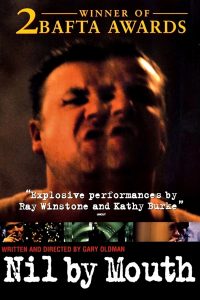
The London of glass towers and tourist attractions is not the only London there is. An underbelly of the city is explored in this depressing account of a big-city existence that includes poverty, violence, addiction, and less-than-pleasant living conditions. The acclaimed English actor Gary Oldman served here as director and drew on his own childhood experiences growing up in southeast London full of council flats, local stores, and grimy streets. Even though the movie is 20 years old, the working-class environment is not much different in any large city any time.
CITY OF GOD (2002)

An art-house classic movie about Rio de Janeiro’s slums and a great portrait of two cities within one: the one of people who are secure and employed, and the other one of people who are born into poverty and crime from which there is no escape. The movie was an exploration of social inequalities in Brazil that have grown even more pronounced since the film was made.
MINORITY REPORT (2002)
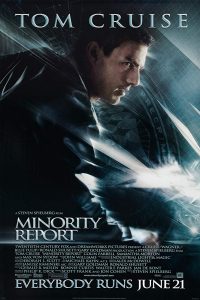
Released in the same year as City of God, this is a very different description of a megacity in a sci-fi crime story set in Washington of the future. Sleek glass towers are patrolled by special “pre-crime” police, car chases take place in the air, and computers are screen projections of data that can be manipulated with a wave of the hand. This is a city in a world where the digital revolution that was dawning at the turn of this century is now complete. The movie’s look inspired many filmmakers, designers, and architects, effectively shaping some design ideas of the future.
SLUMDOG MILLIONAIRE (2008)
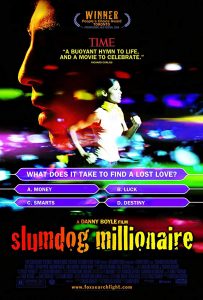
Another look at harsh life in the slums of a large city—this time as a true story of an orphan’s rise from the streets of Mumbai. India’s pace of growth has been relentless in the last 15 years, but its megacities’ congestion and social contrasts have not diminished.
CONTAGION (2011)
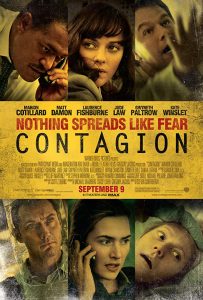
Director Steven Soderbergh starts up his epidemic thriller story in Hong Kong. After SARS, Asia became an obvious suspect in any global health scare, and the megacity’s density of population made it a perfect location for that scenario. Hong Kong residents were not too happy about this portrayal of their beautiful city as a breeding ground for viruses, but the star-studded action thriller was a major Hollywood movie. Key scenes take place at the HK airport, Intercontinental Hotel, and Princess Margaret Hospital, all types of locations where a major epidemic might spread. The film’s plot highlights the dangers that any dense population and exotic cuisine habits pose to worldwide health. The all-star cast is easy on the eye, but this doomsday scenario of worldwide infections spreading at lightning speed feels very scary.
28 DAYS LATER (2003)
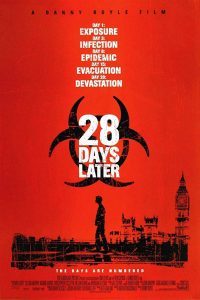
Another take on what a virus could do to masses of people in big cities, this is a sci-fi story about a megacity that becomes completely empty—devoid of any people in the streets or any moving objects such as cars, buses, planes, or boats. This is a vision of London in which the population was wiped out by a mysterious virus, leaving just a few people wandering around the space normally occupied by 10 million inhabitants. Although technically a zombie horror, the best parts of the movie are those astonishing shots of a megacity with all the humans removed. Shot on a small budget before CGI was available, these are actual shots of Westminster Bridge shot at 5:00 AM some 25 years ago.
ELYSIUM (2013)
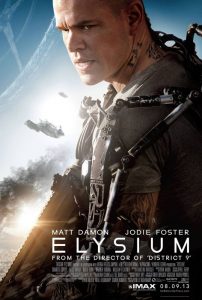
One of the best movies about a possible and not-so-distant future. In the year 2154, the wealthy few percent live on a space station in health and luxury, whereas the rest of mankind toils on an Earth that looks like one big landfill. Matt Damon plays a man who is trying to save his friends, find a cure for his ravaged body, and make Elysium available to more than just a few. The movie was directed by Neil Blomkamp, a South African director who earlier made the genius sci-fi movie District 9. Both movies are biting social commentaries set in a very creative sci-fi environment. In Elysium, both the technology of the space station and the ubiquitous robots managing the “colony” of Earth (police, office clerks, transportation) look chillingly differentiated and real.
99 HOMES (2015)

In this fictional account of a very real 2008 real estate crisis in the U.S., Andrew Garfield portrays an unemployed single father whose home is foreclosed. He finds a job with a real estate broker who specializes in…foreclosures. Directed by Ramin Bahrani, this is a harsh look at the American Dream that is no longer a dream. A good portrayal of the real estate excesses and traps in the U.S. housing market.
THE BIG SHORT (2015)
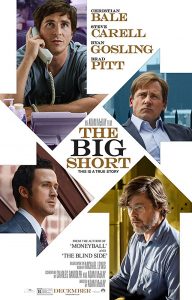
Another movie commentary on the real estate crisis that affected all the big U.S. cities, The Big Short tells a partially true story of a group of investors who decided to bet big against the mortgage market, just prior to the 2008 real estate crash. They discover the enormity of this flawed system by visiting acres of foreclosed homes, meeting borrowers of lenders of sub-prime loans, and examining the entire real estate landscape in the large American cities.
TOMORROWLAND (2015)
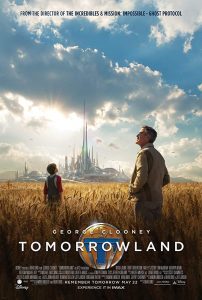
Although a kid’s fantasy adventure from Disney/Pixar, it features an interesting vision of future cities from the director Brad Bird, and his Pixar animators team and Disney Imagineering geniuses. Some similar modern building design ideas are already percolating in Asian cities, so it is worth a look to imagine cities of the future.
3% (2016 -)

A TV series about a future world where only 3% of the population can be accommodated with a healthy, affluent life on the “offshore” island, whereas the rest barely survives in slums that very much resemble the notorious Brazilian favelas. A combination of Elysium and Hunger Games, this Brazilian TV show (dubbed in English) is a great illustration of a possible outcome of increasing social and technological inequalities. The “Earth” scenes are filmed in an environment that looks like the actual slums of Brazilian megacities. Check out The Megacities: Sao Paulo segment as a companion piece to this series.
GHOST IN THE SHELL (2017)

A story of an android with a human brain inside presents a vision of Tokyo in the future. Gigantic holographic billboards are looming among apartment skyscrapers, but inside, the flats are no more than prison cells—basic four walls and a few electronic gadgets. Tokyo’s apartments are famed for their limited space. The movie just takes the idea a bit further.
CRAZY RICH ASIANS (2018)

Even though this blockbuster movie about rich Asian families is a comedy and a bit of a fairy tale, many plot points revolve around contemporary life in Singapore, Hong Kong, and Kuala Lumpur. There are great shots of the iconic Marina Bay Sands Hotel, South-Asian luxury resorts, and the 21st century style Asian airports.
